
How to Use 2S 7.4V 13A 18650 Lithium Battery Protection BMS Module: Examples, Pinouts, and Specs
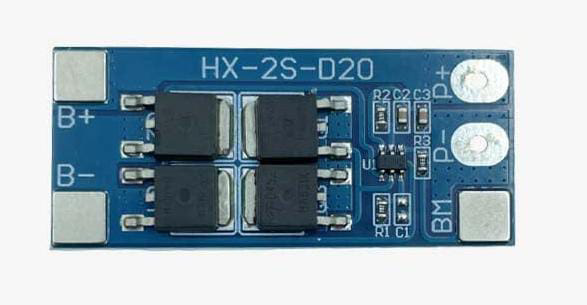
 Design with 2S 7.4V 13A 18650 Lithium Battery Protection BMS Module in Cirkit Designer
Design with 2S 7.4V 13A 18650 Lithium Battery Protection BMS Module in Cirkit DesignerIntroduction
The 2S 7.4V 13A 18650 Lithium Battery Protection BMS Module by Robocraze is an essential component for managing and protecting 2-cell lithium-ion battery packs. This Battery Management System (BMS) ensures the safe operation of the battery pack by providing overcharge, over-discharge, and short circuit protection. It is commonly used in portable electronics, electric vehicles, and DIY projects where a reliable power source is required.
Explore Projects Built with 2S 7.4V 13A 18650 Lithium Battery Protection BMS Module
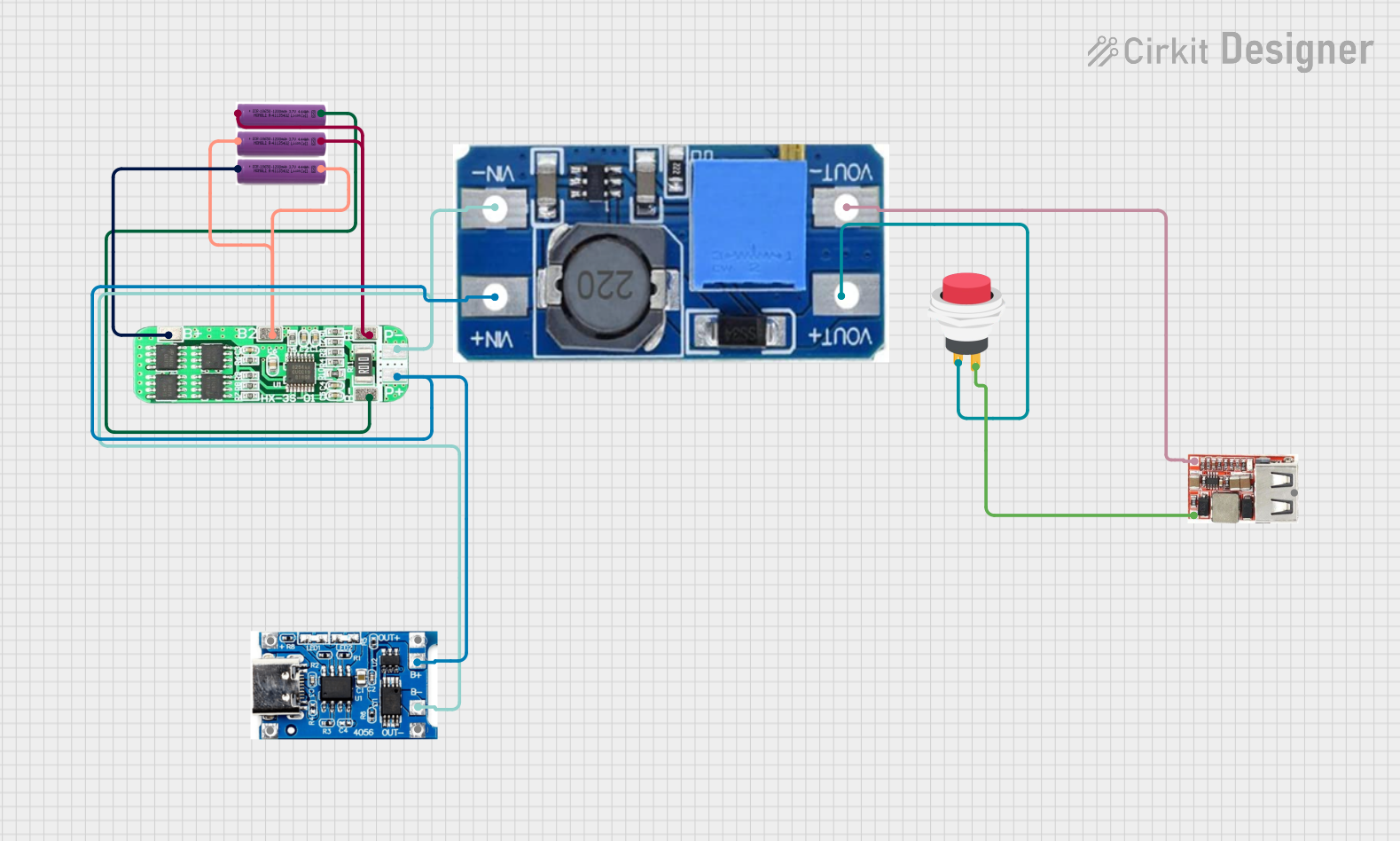
 Open Project in Cirkit Designer
Open Project in Cirkit Designer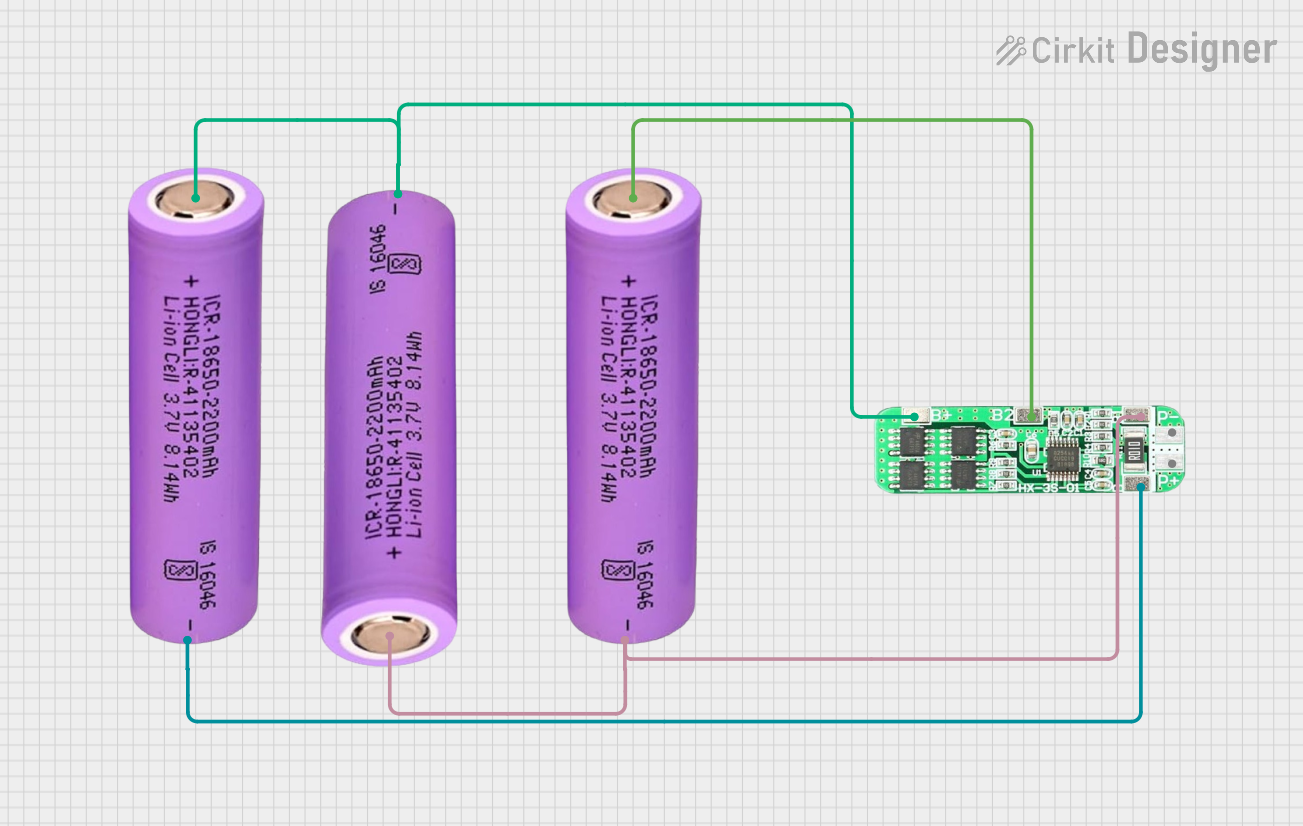
 Open Project in Cirkit Designer
Open Project in Cirkit Designer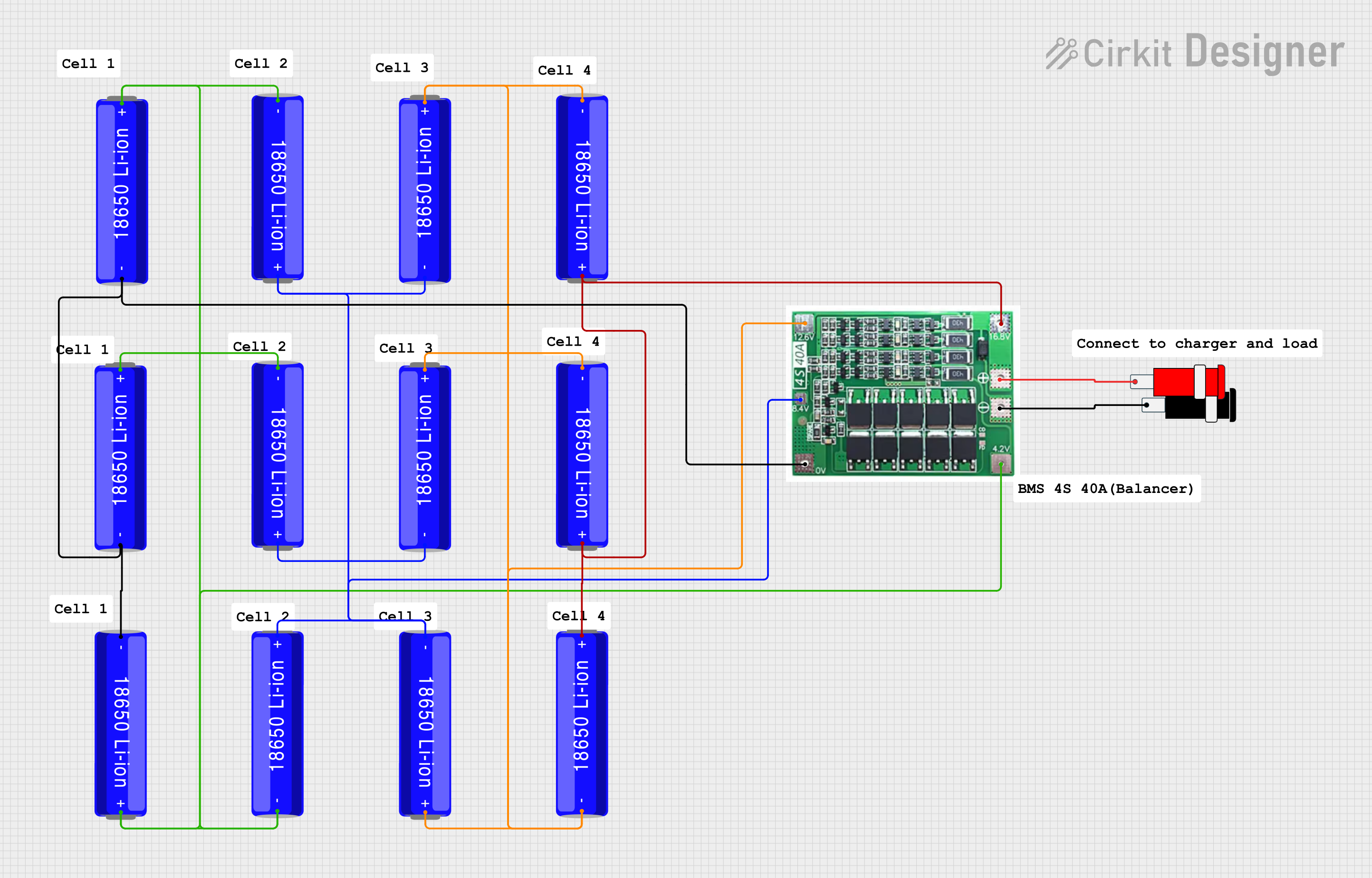
 Open Project in Cirkit Designer
Open Project in Cirkit Designer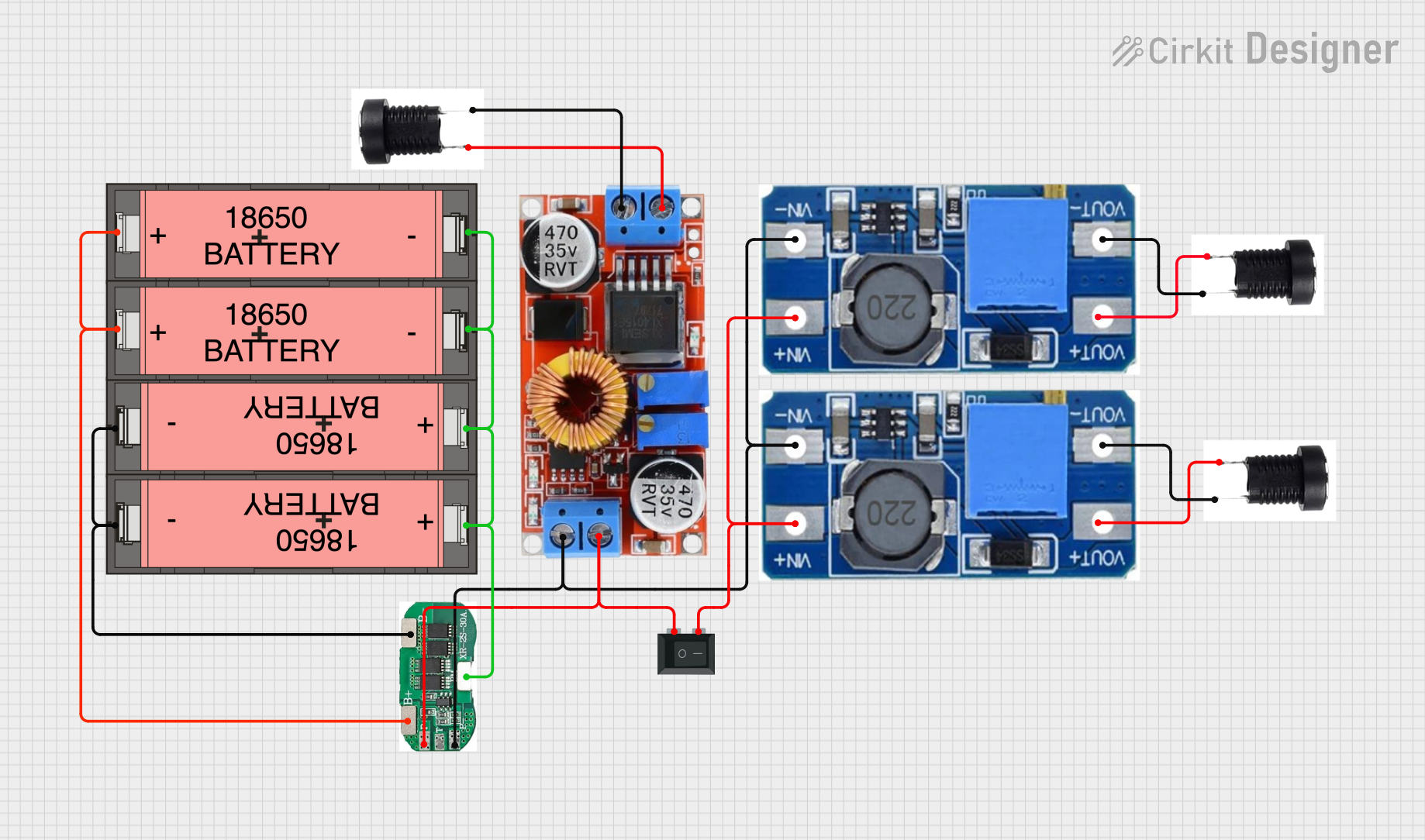
 Open Project in Cirkit Designer
Open Project in Cirkit DesignerExplore Projects Built with 2S 7.4V 13A 18650 Lithium Battery Protection BMS Module

 Open Project in Cirkit Designer
Open Project in Cirkit Designer
 Open Project in Cirkit Designer
Open Project in Cirkit Designer
 Open Project in Cirkit Designer
Open Project in Cirkit Designer
 Open Project in Cirkit Designer
Open Project in Cirkit DesignerTechnical Specifications
General Features
- Manufacturer: Robocraze
- Manufacturer Part ID: TKJHIKJTYIKJHI7YIUHYHO
- Battery Configuration: 2 Series (2S)
- Voltage: 7.4V (nominal)
- Maximum Operating Current: 13A
- Charge Voltage: 8.4V
- Overcharge Detection Voltage: 4.25±0.025V (per cell)
- Over-discharge Detection Voltage: 2.50±0.08V (per cell)
- Operating Temperature Range: -40°C to +50°C
Pin Configuration and Descriptions
| Pin Number | Description | Notes |
|---|---|---|
| 1 | B+ (Battery Positive) | Connect to battery positive terminal |
| 2 | BM (Battery Mid-point) | Connect to the positive terminal of the first cell |
| 3 | B- (Battery Negative) | Connect to battery negative terminal |
| 4 | P+ (Output/Charge Positive) | Connect to load or charger positive |
| 5 | P- (Output/Charge Negative) | Connect to load or charger negative |
Usage Instructions
Integration into a Circuit
Battery Connection:
- Connect the positive terminal of the first battery cell to the BM pin.
- Connect the positive terminal of the second battery cell to the B+ pin.
- Connect the negative terminal of the second battery cell to the B- pin.
Load/Charger Connection:
- Connect the positive terminal of the load or charger to the P+ pin.
- Connect the negative terminal of the load or charger to the P- pin.
Best Practices
- Ensure that the battery cells are of the same type and capacity.
- Do not exceed the maximum operating current of 13A.
- Always double-check wiring to prevent short circuits.
- Use appropriate gauge wires for the current load.
- Avoid exposing the BMS to temperatures outside the specified range.
Troubleshooting and FAQs
Common Issues
- Battery not charging: Ensure that the charger is connected correctly and is functioning. Check the BMS connections to the battery.
- Battery drains quickly: Verify that the battery cells are balanced and in good condition. Replace cells if necessary.
- No output power: Check for proper BMS wiring and ensure that the protection circuit has not been triggered.
FAQs
Q: Can I use this BMS with batteries other than 18650? A: Yes, as long as they are lithium-ion cells with compatible voltage and current ratings.
Q: What happens if the BMS detects an overcharge condition? A: The BMS will disconnect the charging circuit to prevent damage to the battery cells.
Q: Can this BMS be used for more than 2 cells in series? A: No, this BMS is specifically designed for 2S configurations only.
Q: How do I reset the BMS if the protection circuit has been triggered? A: Disconnect and reconnect the battery pack to reset the BMS.
Example Arduino UNO Connection Code
// This example assumes the use of a generic Arduino UNO to monitor the battery voltage.
// The BMS module does not directly interface with the Arduino, but the battery voltage can be read through a voltage divider.
const int batteryPin = A0; // Analog pin for battery voltage reading
void setup() {
Serial.begin(9600);
}
void loop() {
int sensorValue = analogRead(batteryPin); // Read the analog value
float voltage = sensorValue * (7.4 / 1023.0); // Convert to voltage
Serial.print("Battery Voltage: ");
Serial.println(voltage);
delay(1000);
}
Note: The code above is a simple demonstration of how to read the battery voltage using an Arduino UNO. It does not interact with the BMS module directly. Ensure that the voltage divider is correctly calculated to prevent exceeding the Arduino's maximum voltage input (5V).